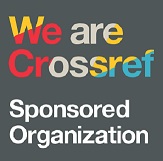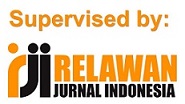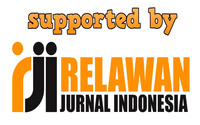LEARNING DISABILITY AND SPEECH DISORDER AMONG TODDLERS: A CASE STUDY ON KURDISH PRE-SCHOOL CHILDREN
Abstract
Keywords
Full Text:
PDFReferences
Bigner, J. (1979). A Tribute to the Founding Editor of the Journal of GLBT Family Studies. Journal of GLBT Family Studies, 7(5), 419-422.
Brown, H. Douglas. (2001). Teaching by Principle and Interactive Approach to Language Pedagogy. New York: Longman Inc.
Brown, R. (1973). A First Language: The Early Stages. Cambridge, MA: Harvard University Press.
Brumfit, C. J. (1980). From Denning to Designing: Communicative Specifications Versus Communicative Methodology in Foreign Language Teaching. Studies in Second Language Acquisition, 3(1), 1-9.
Brumfit, C. J. (1984). Communicative Methodology in Language Teaching. Cambridge: Cambridge University Press.
Bruner, J. (1983).In Search of Mind: Essays in Autobiography. New York, NY: Harper & Row.
Bruner, J. (1996).The Culture of Education. Cambridge, MA: Harvard University Press.
Chomsky, N. (1994). Naturalism and Dualism in the Study of Language and Mind. International Journal of Philosophical Studies, 2, 181-209.
Clark, S. (2003). Enhancing the Educational Value of Business Internships. Journal of Management Education, 27(4), 472-484.
Cohen, L., and Holliday, M. (1979). Statistics for Education and Physical Education. London: Harper &Row.
Cohen, L., and Holliday, M. (1982). Statistics for Social Scientists. London: Harper & Row.
Cohen, L., and Holliday, M. (1996). Practical Statistics for Students. London: Paul Chapman.
Cohen, L., and Manion, L. (1994). Research Methods in Education (4th Ed.). London: Routledge.
Cohen, L.; Manion, L.; and Morrison, K. R. B. (2004). A Guide to Teaching Practice (5th Ed.). London: Routledge.
Cohen, M. R., and Nagel, E. (1961). An Introduction to Logic and Scientific Method. London: Routledge & Kegan Paul.
De Villiers, J. G. (2007). The Interface of Language and Theory of Mind. Lingua, 117, 1858-1878.
Dornyei, Z. (2007). Research Methods in Applied Linguistics. New York: Oxford University Press.
Douglas, J.W.B. (1964). The Home and the School. MacGibbon and Kee, London.
Edward, J. (2013). Learning to Talk: Home. The USA: The University of Wisconsin–Madison.
Hart, B., & Riseley, T. R. (1995). Meaningful Differences in the Everyday Experience of Young American Children. Baltimore, MD: Paul H. Brookes Publishing Company.
Hutten, A. P. (1999). An Empirical Assessment of the Residual Income Valuation Model1. Journal of Accounting and Management, 26(1), 1-34.
Hutten, J. (1999). Bio Feedback for Depression. Journal of Neurotherapy, 3, 28-35.
Jusczyk, P., and Honne, W. (1996). Finding and Remembering Words: Some Beginnings by English Learning Infants. Current Directions in Psychological Science, 6(6), 170-174.
Levin, V., and Vevea, J. (1998). Fixed- and Random-Effects Models in Meta-Analysis. Psychological Methods, 3(4), 486-504.
McCashen, A. (2005). A Strengths Approach to supporting Early Mathematics Learning in Family Contexts. Australasian Journal of Early Childhood, 41(1), 45-53.
Morris, J. C. (1966). Future of Chlorination. Journal Awwa, 58(11), 1475-1482.
Ocher, R. (2008). Elemental Analysis and Characterization of Ochre Sources from Southern Arizona. Journal of Science, 35(3), 752-762.
Pinker, S. (1994).The Language Instinct. New York: William Morrow.
Pinker, S. (1999). Words and Rules: The Ingredients of Language. New York, NY: HarperCollins.
Richard Nordauist, H. (2013). But Subject Matter Content Knowledge Is Not Enough. Urban Education, 48(3), 347-349.
Risley, T. R. (1995). Meaningful Differences in the Everyday Experience of Young American Children. Baltimore, MD: Paul H. Brookes Publishing Company.
Schumaker, J., and Deshler, D. (2009). Adolescents with Learning Disabilities as Writers: Are We Selling Them Short? Learning Disabilities: Research and Practice, 24(2), 81-92.
Smith, C.G. (1968). The Emergence of the Middle East. Journal of Contemporary History, 3(3), 3-17.
Snowling, MJ.; Stothard, SE.; Clarke, P.; Bowyer-Crane, C.; Harrington, A.; Truelove, E.; and Hulme, C. (2010). York Assessment of Reading for Comprehension. GL Assessment; London.
Vevea, J. L. (1998). Fixed- and Random-Effects Models in Meta-Analysis. Psychological Methods, 3(4), 486-504.
DOI: https://doi.org/10.30743/ll.v3i2.1693
Refbacks
- There are currently no refbacks.
Fakultas Sastra
Universitas Islam Sumatera Utara (UISU), Medan
Jl. Sisingamangaraja Teladan Medan 20217
Telp. (061) 7869911, e-mail: language_literacy@sastra.uisu.ac.id









